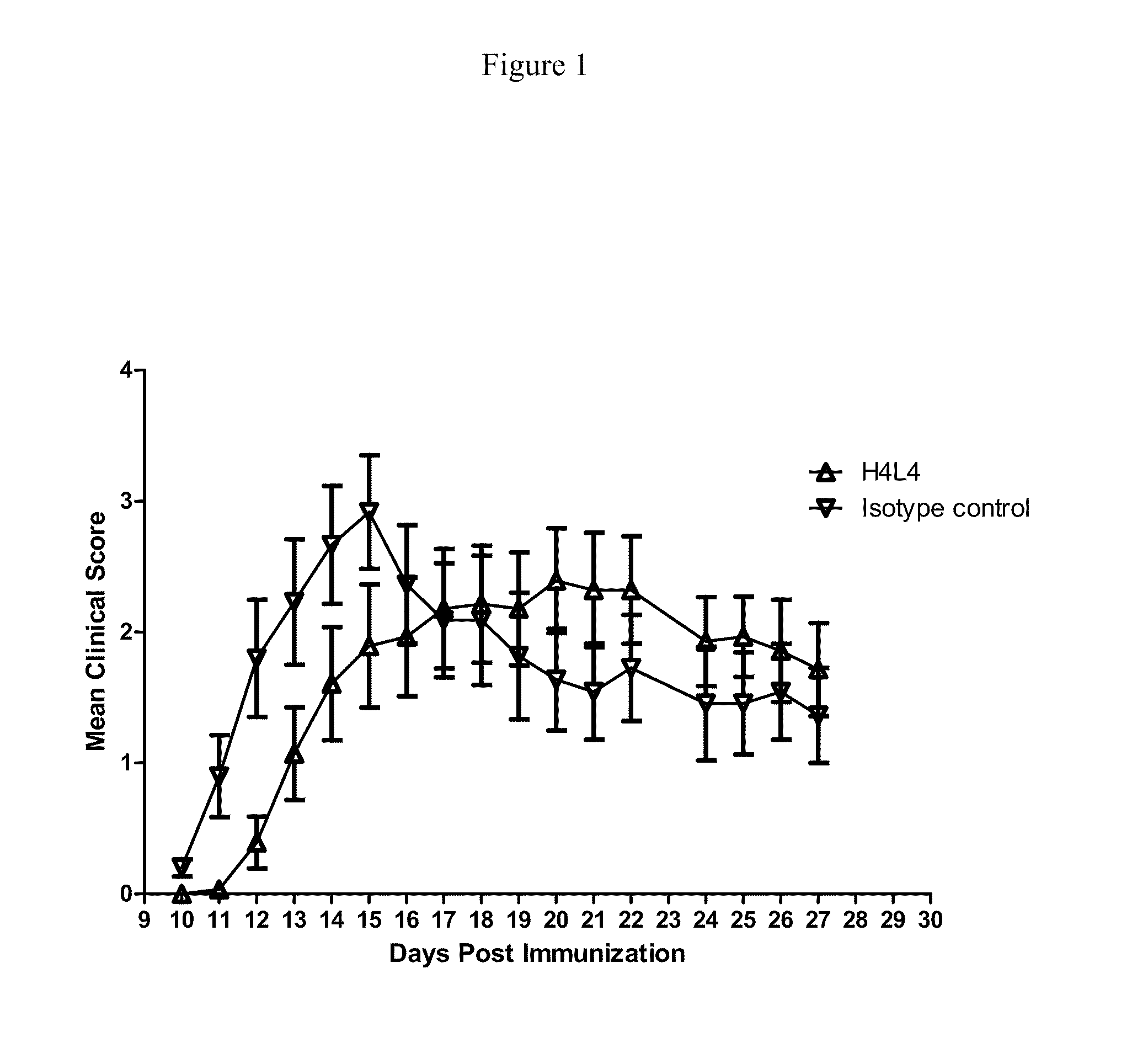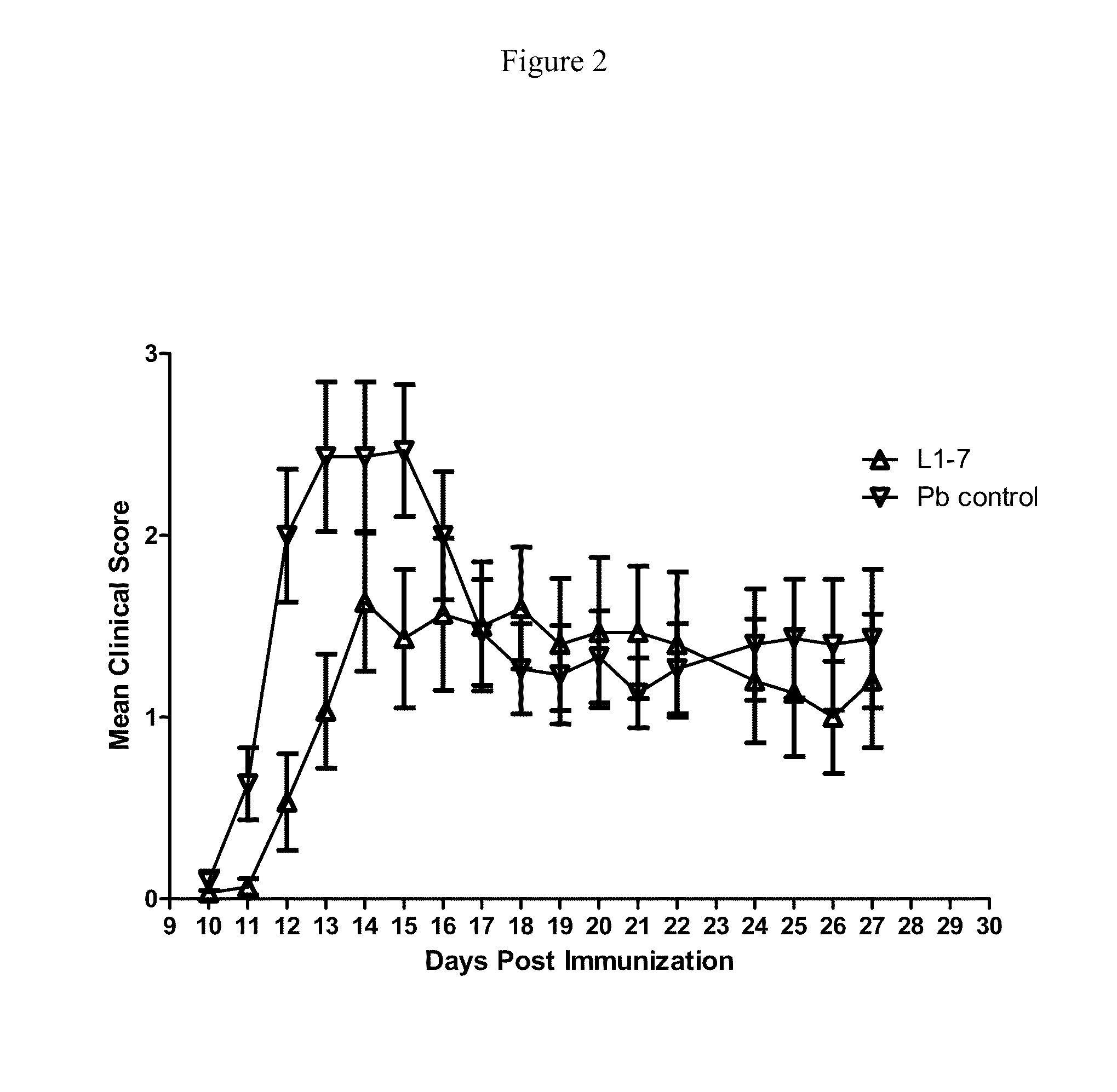Ang-2 inhibition to treat multiple sclerosis
- Summary
- Abstract
- Description
- Claims
- Application Information
AI Technical Summary
Benefits of technology
Problems solved by technology
Method used
Image
Examples
example 1
[0269]Anti-ANG-2 Inhibition Reduced Monocyte Adhesion to Endothelial Cells in CNS Model of Inflammation
[0270]Summary
[0271]The nervous system is constantly infiltrated by sentinels coming from the blood and known as perivascular macrophages. This example shows evidence that the CD68+GR1− monocytes can give rise to perivascular macrophages in mice suffering from endotoxemia. After adhesion to the endothelium, these monocytes start to crawl, adopt a rod-shaped morphology when passing through the capillaries, and can manifest the ability to proliferate and form a long cytoplasmic protuberance. They are attracted in greater numbers during endotoxemia by a combination of vasoregulatory molecules, including tumor necrosis factor, interleukin-β, and ANG-2. After hours of delay, some of them cross the endothelium to expand the population of perivascular macrophages. A depletion of adherent monocytes and perivascular macrophages can be achieved by injection of ANG-2 peptide-Fc fusion protein....
example 2
Treatment in Animal Model of Multiple Sclerosis Using ANG-2 Peptide and Antibody Inhibitors
Evaluation of Anti-ANG2 Monoclonal Antibody H4L4 and Anti-ANG2 Peptibody L1-7 in the SJL / PLP139-151 Experimental Autoimmune Encephalomyelitis Model.
[0303]Experimental Autoimmune Encephalomyelitis (EAE), a preclinical model of multiple sclerosis, was induced in 11-week old female SJL / J mice by immunization with PLP139-151, a peptide of proteolipid protein (PLP) which is a component of myelin. Complete Freund's adjuvant was prepared by mixing 10 ml incomplete Freund's adjuvant plus 30 mg M. tuberculosis H37Ra (final conc.=3 mg / mL M. tuberculosis). A 1:1 emulsion of PLP139-151 and CFA was made by mixing equal volumes of 3 mg / mL PLP139-151 with CFA. The emulsion was drawn into a 1-cc glass tuberculin syringe. Mice were injected subcutaneously (SC) with a total of 200 mL of emulsion containing 300 μg PLP and 300 μg M. tuberculosis H37 Ra.
[0304]On the day of immunization (Day 0) groups of mice were ...
PUM
 Login to View More
Login to View More Abstract
Description
Claims
Application Information
 Login to View More
Login to View More - R&D
- Intellectual Property
- Life Sciences
- Materials
- Tech Scout
- Unparalleled Data Quality
- Higher Quality Content
- 60% Fewer Hallucinations
Browse by: Latest US Patents, China's latest patents, Technical Efficacy Thesaurus, Application Domain, Technology Topic, Popular Technical Reports.
© 2025 PatSnap. All rights reserved.Legal|Privacy policy|Modern Slavery Act Transparency Statement|Sitemap|About US| Contact US: help@patsnap.com



